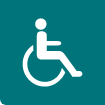We use cookies to improve your experience. By accepting you agree to our cookie policy

The very simple answer to this question is that anyone can get CRPS.
Although studies suggest that both men and women, adults and children can all develop CRPS, the available research suggests that CRPS is more common in women than in men at a ratio of 3-4:1 (de Mos, M. et al. 2007) and the average age is between 40-60 years old.
However, de Mos, M (2007) stated that the highest incidence rates in a certain age group of Complex Regional Pain Syndrome in females was actually between 61-70 years of age. That is not to say that men cannot be affected nor that it is not possible to develop under 40 years, because it is not true.
In a UK study, undertaken by Shenker, N. et al. (2015), they found that out of the 240 patient study that: "…72.5% were female (2.6:1), with a mean age at symptoms onset of 43 years, and were left-handed more than expected (21.8% versus 10% in the general population)."
It is generally considered that CRPS rarely occurs in the elderly. Moreover, professionals are now seeing more and more patients between the ages of 20-35 years old.
There is not one gender, race, age or country that is more susceptible to CRPS than another, it can be literally anyone who can 'get' Complex Regional Pain Syndrome.
Children can be affected by the condition; the studies across the world believe that it is rarely seen in children under the age of 5 years old, but this does NOT mean children under 5 can’t be diagnosed with CRPS because even though it is rare there are cases around the world. The youngest child diagnosed with Complex Regional Pain Syndrome or CRPS was just 3 years of age. 90% of child cases reported are females in the range of 8-16 years and the average of children suffering with CRPS is 13 years.
Does your child or teen live with Complex Regional Pain Syndrome? Check out the Burning Nights CRPS Support have a CRPS in Children and Teens leaflet. Head over to our online shop and get yourself a copy. These leaflets are also available to download for free and we can send the CRPS in Children and Teens leaflets directly to you GP or pain clinic or hospital. Please contact us for further information.
According to a research study undertaken in Denmark by Henneberg, S.W. et al. (2003): "Among physicians in Denmark it is not common knowledge that CRPS also affects children. It is not described in paediatric textbooks and until 1978 there were only eight published case reports. CRPS is seen in older children and teenagers and the pain is often located in a leg."
They also stated that "CRPS is more common among girls than boys (approx. 4:1)."
In a recent study from Pons, T. et al. (2015) on the potential risk factors for CRPS, they found that: "Potential risk factors identified (strong weighting against bias, good quality, and relevance) across the 16 papers are as follows: being female (particularly postmenopausal); obtaining a fracture of the distal radius; suffering an ankle dislocation or intra-articular fracture; and reports of higher than usual levels of pain in the early phases after trauma."
In a study done in the Netherlands by de Mos, M. et al (2007), they studied a register of 600,000 patients and they found that: "The estimated overall incidence rate of CRPS was 26.2 per 100,000 person years (95% CI: 23.0-29.7)." So this would mean that 1 person in every 3,800 are diagnosed with CRPS formerly called RSD. This may not seem a lot however this figure will keep on rising through the future years as the incidence of chronic pain in general will keep rising.
In the UK, it is estimated at around 15,000 people have Complex Regional Pain Syndrome, but around 8 MILLION people in the UK suffer from chronic pain. This is a huge number and will only keep on rising every year, alongside the cost to the Governments around the world in treatment, care, lack of employment, social needs, medication, benefits.

Last Updated: 02/06/2017
Lorimer Mosely, Body In Mind ‘What is Complex Regional Pain Syndrome – In Plain English,’ 9 December 2009. Available from: <http://www.bodyinmind.org/what-is-complex-regional-pain-syndrome-in-plain-english/>
We use cookies to improve your experience. By accepting you agree to our cookie policy
 £
£